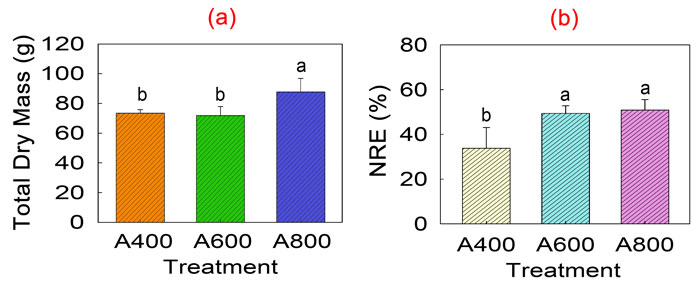| Tweet | Follow @co2science |
Paper Reviewed
Li, L., Manning, W. and Wang, X. 2019. Elevated CO2 increases root mass and leaf nitrogen resorption in red maple (Acer rubrum L.). Forests 10: 420; doi:10.3390/f10050420.
Working with nine continuously stirred tank reactor chambers located inside a glass greenhouse at the University of Massachusetts, Li et al. (2019) recently exposed two-year-old red maple seedlings (Acer rubrum) to three different concentrations of atmospheric CO2 over the course of one full growing season. The main objective of their experiment was to examine the leaf nitrogen (N) content, N resorption efficiency and biomass allocation responses of this deciduous tree species that is widespread across eastern and central North America. The importance of studying N resorption efficiency (NRE), which is defined as the process by which N is mobilized from senescent leaves and transported to other plant parts, was to determine if this process is enhanced under elevated CO2 so as to help counteract leaf N decline that is often observed in tree leaves at high levels of CO2.
The results of the authors' study are summarized in the figure below. Panel (a) illustrates the total dry mass produced at the end of the growing season at the three different CO2 treatments, which shows that the trees in the 800 ppm treatment experienced a 19.2% growth enhancement compared to the ambient (400 ppm) CO2 treatment. However, no biomass difference was found between trees growing in the ambient and 600 ppm CO2 treatments.
Li et al. also report that the N content of senescent leaves declined by 27.5% and 28.1% (relative to ambient CO2) in the 600 and 800 ppm CO2 treatments, respectively. In addition, elevated CO2 enhanced NRE by 46.2% and 50.3% at 600 and 800 ppm CO2, again respectively. The significance of this latter observation, according to the authors is that "higher NRE of senescent leaves makes [it] possible [for] more nitrogen transfer to other plant organs for early growth [the] next year." And thus, thanks to elevated CO2, NRE is becoming "an increasingly important N source" for red maple and likely other trees and plants.

Figure 1. Total dry mass (Panel a) and nitrogen resorption efficiency (NRE, Panel b) of red maple seedlings grown under three different atmospheric CO2 treatments (A400, A600 and A800 correspond to 400, 600 and 800 ppm CO2, respectively) at the end of one growing season. Source: Adapted from Li et al. (2019).




